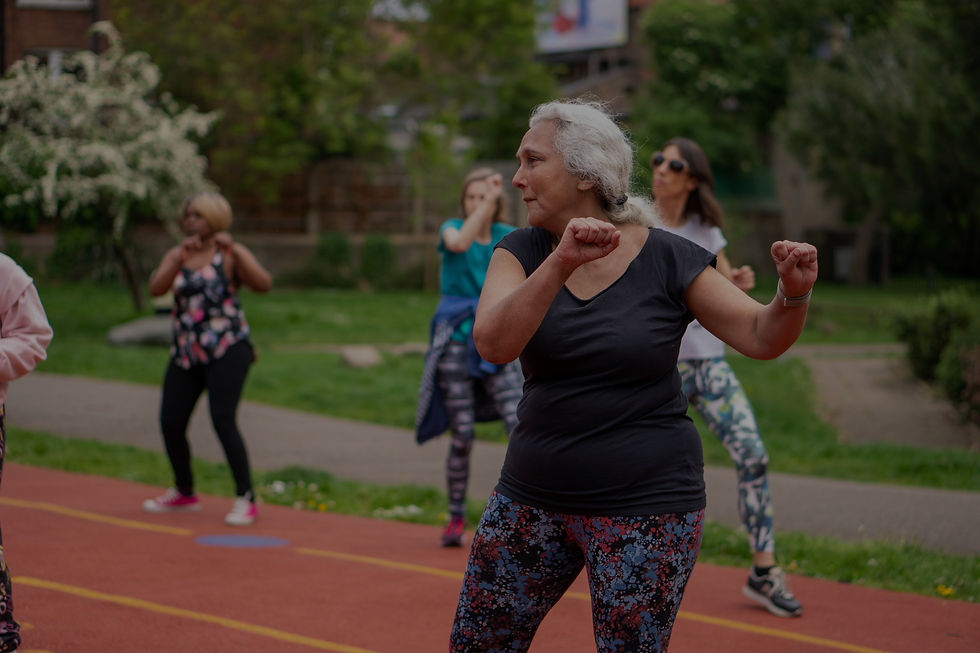Strength Training for Seniors: Why Age Isn't an Excuse Anymore
- Jordan Devanney

- Aug 29
- 3 min read
Here's the brutal truth: Your body is breaking down. Every year after 30, you lose 3-8% of your muscle mass. By 65, you could be half as strong as you were at 25.
But here's the thing - you don't have to accept it.
I'm not going to sugarcoat this or pretend getting older is easy. Your joints are probably going to ache more, you'll feel weaker, and those stairs that never bothered you suddenly feel like mountains. I get it. But sitting around feeling sorry for yourself won't fix anything.
The good news? You can fight back. And you should.

Why This Matters More Than You Think
Sarcopenia - the fancy word for muscle wasting - isn't just about looking frail. It's about:
Falling and breaking bones because you can't catch yourself
Losing independence because you can't open jars or lift groceries
Becoming housebound because walking to the mailbox exhausts you
Dying earlier because weak muscles predict mortality better than most diseases
Scary? Good. It should be. Because this is your wake-up call.
But here's what's not scary: You can reverse this decline at any age. I've seen 70-year-olds deadlift their bodyweight and 80-year-olds regain strength they lost decades ago. The research is clear - your muscles don't care how old you are. They respond to challenge.
So stop making excuses about your age. Start making changes. Strength training for seniors.
The Non-Negotiable Rules for Senior Strength Training
1. See Your Doctor First (Seriously)
I don't care if you "feel fine." Get medical clearance, especially if you have diabetes, heart disease, or joint problems. This isn't optional - it's smart. Don't be the person who ends up in the ER because you were too proud to ask for guidance.
2. Warm Up or Pay the Price
Cold muscles tear. Period. Spend 10 minutes walking, moving your joints, and preparing your body. Yes, it's boring. No, you can't skip it. Your future self will thank you.
3. Master Form Before Adding Weight
Your ego wants to lift heavy. Your joints want to survive. Listen to your joints. Perfect your technique with bodyweight or light weights first. Sloppy form with heavy weight isn't impressive - it's stupid.
4. Progress Gradually (Patience Beats Pride)
Add 2-5 pounds when you can complete all sets with perfect form. Not 10. Not 15. Small, consistent gains beat dramatic leaps that end in injury.
5. Recovery Isn't Optional
Your muscles grow when you rest, not when you train. Take 48 hours between sessions targeting the same muscles. Sleep 7+ hours. Eat protein. Skip this, and you're wasting your time.

What Actually Works for a 65-Year-Old Woman (or Anyone)
Forget the complicated routines. Here's what moves the needle:
Start Here:
Squats (use a chair if needed - so what?)
Push-ups (wall, incline, or knee versions count)
Rows (resistance bands work perfectly)
Planks (even 15 seconds beats zero seconds)
Step-ups (your stairs aren't just for decoration)
Do This:
2-3 sessions per week, 20-30 minutes each
8-12 repetitions, 1-3 sets
Focus on control, not speed
Warning Signs to Stop:
Sharp pain (dull muscle fatigue is normal, stabbing pain isn't)
Dizziness or chest pain
Joint swelling that persists
The Hard Truth About Getting Started
"I'm too old." Bullshit. The oldest person to start lifting in my experience was 82. She's now 85 and stronger than most 40-year-olds.
"I don't have time." You have time to scroll social media for hours but not 30 minutes twice a week to save your independence? Come on.
"It's too hard." Of course it's hard. Everything worthwhile is hard. But you know what's harder? Being unable to get out of a chair at 75.
"I might get hurt." You're more likely to get hurt doing nothing. Weak muscles and brittle bones don't protect you - they make you fragile.
Your Choice
You have two paths:
Path 1: Accept decline. Watch yourself get weaker, frailer, and more dependent. Blame age for everything.
Path 2: Fight back. Start strength training. Reclaim your power. Show everyone (including yourself) what "old" really looks like.
I can't make this choice for you. But I can tell you that every day you wait, you're choosing Path 1.
The best time to start was 20 years ago. The second best time is today.
Stop reading. Start moving. Your future self is counting on you.
Jordan.
Need guidance? Don't go it alone. Working with an experienced trainer who understands the unique challenges of training older adults isn't weakness - it's wisdom. At Devanney Strength, we specialise in helping people break through mental and physical barriers, regardless of age. Because getting older is mandatory. Getting weaker isn't.



Comments